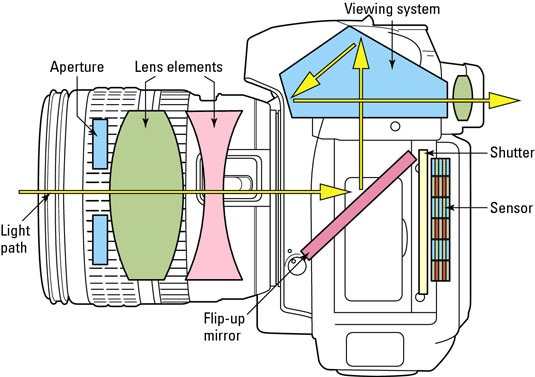Hi all. This is my first post. I'm seriously thinking about applying to optometric college in the fall. I'm trying to improve my knowledge as much as possible of the area, and one question that keeps coming up (I'm a hobby photographer...) is the difference between the eye and a camera.
Most photographers appreciate that the camera/film eye/retina analogy is only so good, and soon becomes impossible to reconcile with the influence of the brain, not to mention peripheral and foveal vision.
But the problem I'm having is to refute those photographers who blindly state that the eye = a 50 mm lens. I think this statement is nonsense, but I'd appreciate your help to clarify my thinking and back up my arguments.
First, a 50mm lens on a 35mm film camera covers a horizontal field of view of 39.6 degrees. A single human eye, on the other hand, from what I've read gives a field of view of 60 degrees inward, and 100 degrees outward. Though much of that is blocked by my nose. Anyway, the point is that thought of as a lens, the eye's field of vision is much wider than that of a 50mm lens.
I also gather that the foveal central field subtends around 5 degrees (I'm not sure if this is horizontal, vertical, or a solid cone angle), although the central 1/2 degree is the clearest.
So we have two competing views: one is that the human eye has a wide field of view, and the other that we only see a very small part of that clearly.
But neither view helps me explain to friends why the 50mm lens isn't going to replicate human vision: I don't think any lens can replicate human vision. Sure, 50mm lenses normally force people to take pictures (especially portraits) from sufficient distance that they look natural, but that still doesn't explain this obsession with 50 degrees. Furthermore, a 50mm lens on a 35mm SLR, when viewed through the viewfinder, projects an image with the same magnification as we see with our eyes, but this says more about the viewfinder magnification that some inherent property of the 50mm lens.
So you can see why I'm confused, and I would just LOVE to learn a bit more. If anyone has any accurate figures for focal length and viewing angles, and if they can help me understand this whole foveal/peripheral business, that would help me a lot.
Thank you!




 Reply With Quote
Reply With Quote





Bookmarks